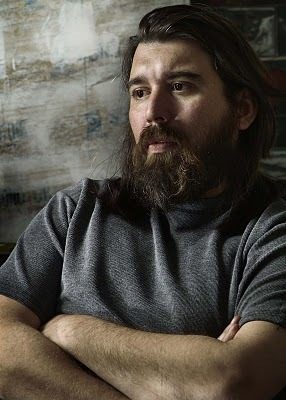
Carleton College is pleased to host the acclaimed photographic exhibit “The Cuban-Americans” by painter and photographer Geandy Pavón. The exhibit, on display as part of the College’s annual Foro Latinoamericano event, runs April 17 through 30. On Wednesday, April 19, Pavón himself will attend a reception in his honor and speak about the exhibit and his work from 5 to 6:30 p.m. in the Weitz Center for Creativity Room 148. This event is free and open to the public.
“The Cuban-Americans” is a photo essay following in the tradition of Robert Frank’s seminal collection “The Americans,” a 1950s unveiling of a more nuanced and certainly less congratulatory view of American society.
Pavón explains, “The Cuban-Americans” takes off from a concept put forth by Cuban-American writer Gustavo Pérez Firmat: a hyphen that both binds and sets apart—nominally and culturally—the Cuban and North American identities. This in-between realm, almost a no man’s land, creates a sort of a temporal existence and, hence, a strangeness, a complex, undefinable and anachronistic space, the key element in this series.”
“What interests me is to concentrate on the hyphen,” said Pavón, 41, who was trained as a painter in Cuba and took up photography four years ago. “To look at Cuban lives in the hyphen that separates the words. It’s like no man’s land.”
For most of 2015, Pavón dwelled on the hyphen between Cuban and American, looking at the lives of more-or-less ordinary people, many of them living just across the Hudson River from New York City, where he has lived since leaving Havana with his family in 1996, in New Jersey. From meals to parties, or scenes of daily life to urban missionaries, he explored a world that is off the radar for many mainstream audiences.
His photos, large silver-gelatin prints, can be humorous, mysterious or unsettling. In one, a couple stands outside a Dairy Queen, the man’s unbuttoned shirt revealing a belly tattooed with the Cuban seal. Another shows a family at Christmas, an obese woman lying in bed, flanked by her husband and sons. Others feature Afro-Cuban dancers in New York City.
Cuban painter and photographer Geandy Pavón is an artist interested in the “conceptual aura” of ruins and decay and in everyday practices of power display, ideas that he developed in his Empire and Wrinkle Portraits series. This latest work garnered significant critical acclaim, and was praised by The New York Times art critic Holland Cotter.
Carleton’s annual Foro Latinoamericano event celebrates and offers in-depth insights into Latin America. The 2017 Foro takes place April 21 and 22 and will focus on “The Cuban Revolution after Fidel Castro.” The program will feature Cuban artist Pavón as well as cultural critic Rachel Price and New York University’s Walfrido Dorta, along with Carleton faculty, exploring such questions as Why is reestablishing diplomatic relations and being able to travel freely to Cuba so decisive for the United States? What impact has the Cuban Revolution had in the political history of the twentieth century? How did the Cuban Revolution change the lives of millions of Cubans both inside and outside the island? A complete schedule of events can be found on Carleton’s Latin American Studies department website.
Geandy Pavón’s “The Cuban-Americans” runs April 17 to 30 in the Weitz Center for Creativity. This event is sponsored by the Carleton College Department of Latin American Studies. For more information, including disability accommodations, call (507) 222-4252. The Weitz Center for Creativity is located at Third and College Streets in Northfield.